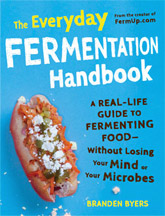Fecal transplants, where feces are transferred from donor to patient, are showing significant recovery rates from functional bowel disorders. The technique is simple and is similar to the process of making yogurt.
If the gut was a comic book city, it would be Gothom City with the good bacteria (Batman and the citizens) and the bad bacteria (Joker, Two Face, Bane, etc.) fighting the constant battle between good and evil. For a healthy person, the good bacteria keep the bad bacteria in check. But for someone suffering from a functional bowel disorder, or recently having taken antibiotics, the bad bacteria may be running the show.
Eat poop for Good Gut Health
According to Professor Lawrence J. Brandt (Montefiore Medical Center, New York, USA), speaking at a press conference after the Gut Microbiota For Health 2nd World Summit in Spain, “stool is the ultimate probiotic.” By translating fecal matter from a healthy donor to a sick patient, bacteria that cause infection such as Clostridium difficile are drastically reduced with the majority of patients showing signs of recovery in as little as a few hours or up to six days.
The stool is transferred by “upper” or “lower” pathways. The upper oral method skips the tastebuds by injecting the poop cocktail through a tube down the throat. The lower method uses a syringe pushed in as far as the syringe will reach before depositing the goods.
Even though there are a lot of DIY projects on this website, I urge you not to try this one at home. Even though Professor Brandt says that animals that eat their own poop are most likely doing so for nutritional purposes, you may not be able to get beyond your gag reflex.
Where do fecal donations come from?
Current research into fecal transplantation shows that the origin of donated feces matters far less than was once assumed. When fecal transplants first appeared on the medical scene, it was common to only transplant poop from close family members or friends who were thought to have encountered similar bacteria in life.
The results of poop infusions show, as long as the donor is healthy and without signs of pathogens or disease (blood and stool sample tests are performed prior to transplantation), that freshly seeded fecal bacteria will overcome the bad bacteria in a patient’s gut whether the donor is a stranger or a life partner.
The rough recipe for stool sample preparation is as follows:
- Chop stool sample down to 2.5 or 3 inches depending on diameter.
- Mix by hand or blender.
- Pour mixture through gauze or some other form of sieve.
- Draw the stool sample up into a syringe.
- Stick the syringe "where the sun don't shine" and release.
- It should take no longer than 1 to 2 minutes to deposit the stool into patient.
While there are established blood banks, I do not yet believe there are any poop banks. If you do want to be a fecal donor, contact your local transplant specialist and check to see if they are accepting universal donors. I wonder if this would become the new craze for college students looking to make some quick cash?
The process is similar to yogurt making
The technique of backslopping a scoop of yogurt from a previous batch into fresh milk is how yogurt has been produced for thousands of years. The concept is to seed fresh milk (with an unpredictable and wild bacterial composition), with good tasting bacteria that will then convert the milk into yogurt.
A healthy stool sample is like a starter culture for the gut. Instead of providing the bacteria to make good tasting food, a stool starter seeds a sick person’s gut with enough good bacteria to allow the balance between good and bad bacteria to return to a manageable level.
But just as yogurt making transitioned away from using heirloom yogurts to seed future batches of milk in favor of direct-set starter cultures, so too it sounds as if Professor Brandt sees this as the ideal approach for fecal transplantation.
The future of Fecal Transplants
Instead of stool samples, it may one day be possible to treat gut conditions with specific probiotic strains of bacteria. Take the red pill for C. difficile or the blue pill for some other gut disorder.
While this exacting prescription may indeed work wonders in the future, I can also imagine it being less effective than the relatively simple process of pumping poop from a healthy person into a sick person. Again, this is similar to the process of making direct-set yogurt (with a few isolated bacteria) versus heirloom yogurt (with a complex colony of bacteria that co-evolved together). A person can successfully backslop a direct-set yogurt a few times, but eventually it will no longer resemble yogurt because the bacterial community that was isolated to create the desired flavor eventually fall apart.
Heirloom yogurts change over time as well, but at a much slower pace given their healthy and balanced ecosystems. I wonder how similar this might be to using fecal transplants with complex bacterial communities versus isolated bacterial strains. Would the effects last as long?
There is still so much that is not understood about the gut microbiota but scientists are no longer ignoring the connection between bacteria and their human hosts. If it weren’t for bacteria, humans and other forms of life would most likely not exist, so it is about time that we give them the credit they deserve.
While the research on eating naturally live and probiotic foods, such as yogurt or sauerkraut, in relation to gut health is still in its infancy, it makes sense that seeding the gut with fresh sources of good bacteria must offer some assistance.
So you don’t have to eat poop to give thanks to the bacteria in your gut. Just eat more fermented foods and you might be helping your Batman bacteria in ways science is only beginning to understand.
To find out more about gut microbiota research and the recent World Summit, visit the Gut Microbiota For Health website.


 Listen Now
Listen Now 
